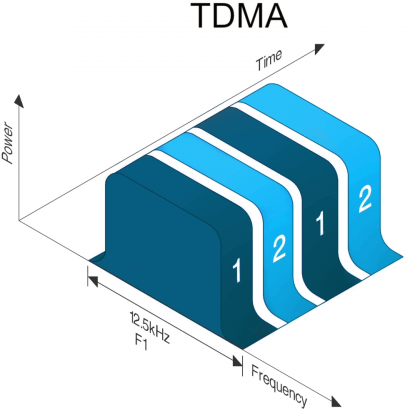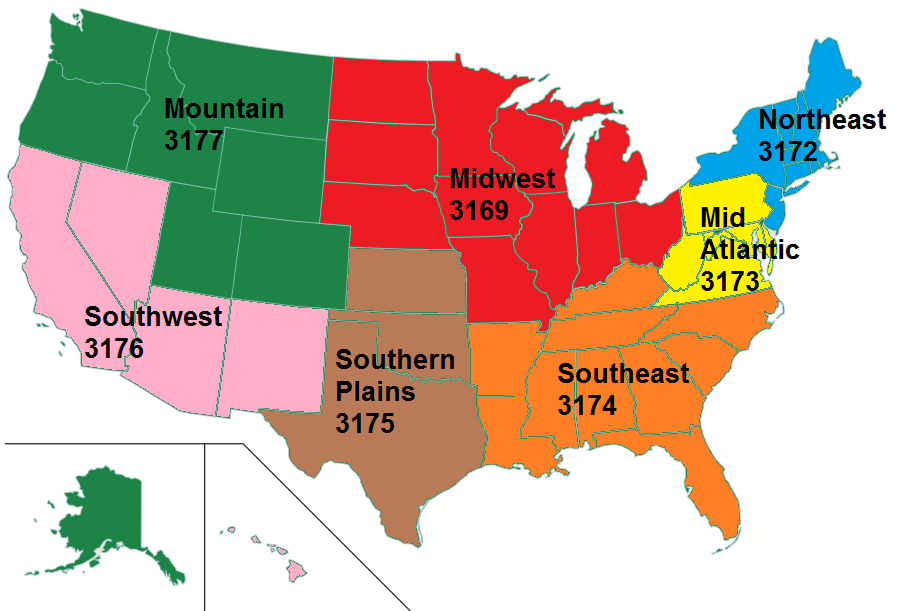
Western States DMR
Network
DMR Etiquette
Contrary to popular belief, you do not need a unique DMR User identification (ID) for each DMR radio that you have. Unlike the commercial communication use of ID's that identify a particular radio, in the amateur radio world the DMR ID identifies the person, not the radio, just like the amateur radio callsign. You don't have an amateur radio callsign for each amateur radio that you have, therefore you can use the same DMR ID on multiple radios. The only requirement is that two (2) or more radios cannot be transmitting at the same time with the same DMR ID. For example, if you have two (2) DMR radios, such as a portable and mobile, and you are the only amateur radio operator that will be using the DMR radios, both DMR radios can use the same DMR ID. If you are not the only amateur radio operator that will be using the DMR radios, then each of the DMR radios should have different DMR ID's.
AUDIO LEVELS
If you have been listening for any length of time you will have notice a significant difference in audio levels from different users. Most of the extremely high audio levels are caused by the use of hot-spots where the operator has not taken the time to properly adjust the audio gain. If you do use a hot-spot, be sure to take the time to properly set the audio gain with the correct equipment. When the audio gain is too high, the signal will be well into saturation and sound very distorted to the point that the voice cannot be understood.
DMR COMMUNICATIONS STRUCTURE
The Digital Mobile Radio (DMR) communications structure utilizes 12.5 kHz of spectrum space for a radio frequency (RF) channel. The DMR digital communications utilizes Time Domain Multiple Access (TDMA) structure with a two (2) Time Slot division, Time Slot 1 and Time Slot 2. What this means is when the operator is talking into the DMR radio microphone, the DMR radio itself is only actually transmitting to the DMR repeater for half the time. This allows two (2) different conversations to be active seemingly to be simultaneous. In reality, the operators conversation is being transmitted only during its allocated Time Slot.
Each Time Slot occupies 12.5 kHz of radio spectrum, not 6.25 kHz of radio spectrum as some documentation shows. Because the operators DMR radio and the DMR repeater are synchronized in time, the DMR repeater can differentiate between the two (2) different conversations, one on Time Slot 1 and one on Time Slot 2. See the TDMA diagram below.

TALK GROUPS
There are two (2) types of Talk Groups, Calling Talk Groups and Conversation Talk Groups. Each Talk Group is assigned a unique Talk Group identification (ID) number. The Talk Groups are then assigned a Time Slot to be used on at each DMR repeater. Talk Groups allow for a structured communications so the operator will only hear the conversation that the operator wants to hear. For example, if the operator has his DMR radio set to listen to the North America English (NA-Eng) Talk Group the operator will not hear other Talk Groups such as World Wide English (WW-Eng) Talk Group.
Calling Talk Group
Calling Talk Groups are generally based upon regions (see the United States Region map below). These regions would be Talk Groups such as World Wide (WW), World Wide English (WW-Eng) North America (NA), Southwest United States (SW) and States of the United States (Calif). These Talk Groups are called Calling Talk Groups because when the Talk Group is used there are generally hundreds if not thousands of DMR repeaters that will be keyed up and transmitting. These Talk Groups are generally Always On or Static which means the DMR repeater will transmit every time the the Talk Group is used. Every amateur radio operator should be mindful of this and use the minimum amount of resources necessary to accomplish the desired communications. If the operator wants to talk to another operator on the same DMR repeater, it would be better and more courteous to use the "Local" Talk Group so only one (1) Time Slot on one (1) repeater is utilized and not one (1) Time Slot on thousands of DMR repeaters which would deny the use of the Time Slot to other operators.
The primary purpose of a Calling Talk Group is so that two (2) or more operators can establish a contact and then agree to move their conversation to a particular Conversation Talk Group.
Conversation Talk Group
Conversation Talk Groups are not region specific. These would be Talk Groups such as TAC 310, Southwest 1 (SW1), California 1 (Calif1) and User Access 1 (UA1). These Talk Groups are generally set to Push-to-Talk Activate (PTT) or Dynamic which means the Talk Group must be activated on a particular DMR repeater by the user keying his DMR radio into the DMR repeater using the Talk Group. PTT or Dynamic Talk Groups will have an expiration timer associated with them, typically 10 or 15 minutes. This means that if the user has not keyed up the DMR repeater on the Talk Group within the specified time-out period, the Talk Group will be turned off. The time-out timer can only be reset by the local repeater user keying the DMR repeater on the Talk Group, the time-out timer will not be reset by a signal on the Talk Group from the network connection. The Conversation Talk Groups will only utilize the Time Slot and Talk Group on the DMR repeaters that were activated for the Talk Group leaving the Time Slot available to other users on all other DMR repeaters. Therefore, Conversation Talk Groups are designed to accommodate conversations for long periods of time.

DMR REPEATER COLOR CODE
The DMR repeater color code designation allows multiple DMR repeaters to be assigned the same RF frequency without interfering with each other where there may be some overlapping coverage area. The Color Code assignment, which can be any number between "0" and "15, is based solely upon which one the DMR repeater owner wants to use.
When an operator programs a DMR radio, attention must be paid to the settings of the "Admit Criteria" and the "In Call Criteria".
When an operator programs a DMR radio with a repeater channel, the "Admit Criteria" MUST be set to "Color Code Free" (or "Color Code") and the "In Call Criteria" MUST be set to "Follow Admit Criteria". NEVER PROGRAM A DMR REPEATER CHANNEL USING "ALWAYS" for the "Admit Criteria".
The only time "Always" should be used for the "Admit Criteria" is when programming a DMR simplex channel or an analog channel.